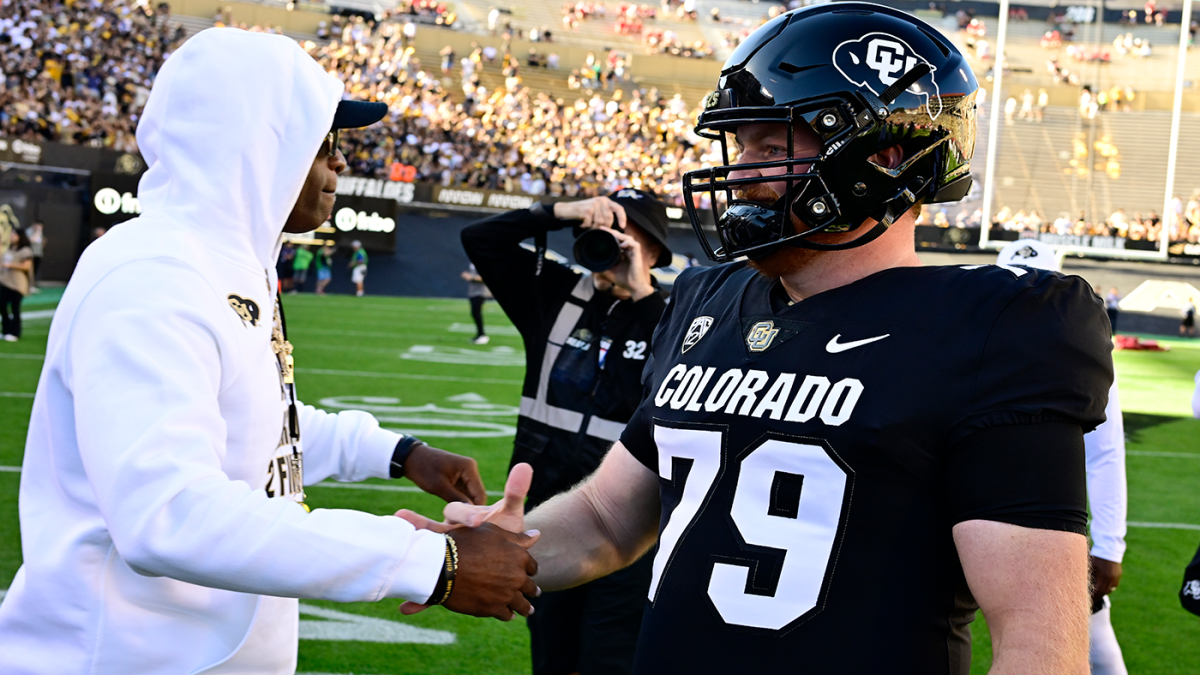Limiting roster sizes across the sport will kill the dreams of many overlooked players

www.cbssports.com
Walk-on players are invaluable to college football, but House v. NCAA settlement provides uncertain future
Limiting roster sizes across the sport will kill the dreams of many overlooked players
Camden Dempsey was among those sitting slack-jawed in the Colorado team room 26 months ago. The little-used offensive lineman heard his new coach famously telling those Buffaloes to essentially vacate the premises.
"I'm bringing my [own] roster with me," Deion Sanders said that day.
Dempsey, a walk-on who had blown out his ACL the previous year, didn't need to be hit over the head with a goal post to get the message. He didn't qualify as "Louie," Sanders' preferred reference to both portal-ready designer players ... and luggage.
By that time, however, Dempsey was already a valuable member of the team -- something more than a warm body. That's why part of Dempsey's purpose these days is to prove every program needs those warm walk-on bodies.
"When coach came in there wasn't a sit-down interview process," Dempsey recalled to CBS Sports recently. "It was an interview over the course of four months. Every day you'd show up to practice, every workout you were at. That was really my interview process."
In that sense, Dempsey had a better chance at making the team than scholarship athletes
because he showed up. Those walk-ons, those non-scholarship roster fillers who seldom get in a game are instrumental to the mission.
Not that Dempsey needs that scholarship. Both his parents are lawyers. His education is being paid for via a prestigious Boettcher academic scholarship, a four-year full ride. Dempsey has already started his own business as part of a class project.
The finance and marketing major is pursuing his master's in real estate.
Also, in four seasons, he has appeared in one game. Hardly Louie.
It's because of Dempsey's selfless work ethic that Coach Prime never did cut him. The lawyers, however, are doing their darndest.
To get the
House v. NCAA settlement across the finish line, cuts have had to be made. Drastic cuts, some would say, that includes limiting roster sizes. It is a legal and budgetary maneuver to allow schools to pay athletes out of that monster $20.5 million revenue sharing pot.
In football that means a roster cap of 105 players. For the average program, that means cutting about 15 walk-ons. That could mean the loss of 2,000 walk-on opportunities across FBS, perhaps 10,000 across all sports.
Dempsey has protested with a grassroots strategy, somehow lining up 90 fellow Big 12 athletes from various sports to sign his letter to
House Judge Claudia Wilken.
It's not exactly storming the castle; it's only a letter, not a formal objection. But Dempsey would love to speak to Wilken in person when she begins formally considering the settlement in April. So far, Dempsey has not received a reply.
"I want something that fits more the student-athlete voice," Dempsey told CBS Sports. "The moment you get lawyers involved it becomes professional and there is a higher standard applied to everything. [The athletes] still want their voices to be heard and that shouldn't be a limiting factor in their voices being heard."
The potential loss of walk-ons has rocked the game. Neither coaches nor players had formal input in the decision. Roster caps were largely a legal maneuver to help the settlement reach the finish line.
"I'm miserable thinking about. We've had to tell a few [walk-ons] already," Kansas State coach Chris Klieman said.
Klieman has already done the math. He says those 105 may not be enough to safely field a team.
"Twenty kids are hurt. Twenty kids enter the portal. Ten kids opt out. You may have 75 kids left, but you may have [only] three DBs or six O-linemen or one quarterback," Klieman explained.
He has also seen the future. Klieman's roster conclusions essentially describe what caused Marshall to opt out of the Independence Bowl last year.
"I'm not so sure we didn't play in the last true group of bowl games. You're going to see more Marshalls of the world now," Klieman said.
The subject is
that sensitive at the moment. Sure, NFL teams get by with rosters of only 53 (plus a practice squad), but those are paid professionals. College players' bodies are still forming. The New York Times on Sunday highlighted athletes' sometimes sketchy medical care. Walk-ons bodies are pounded on without the cushion of that scholarship.
.
.
.
continued
Just sayin': "Collateral damage" from the House vs NCAA lawsuit could be the elimination of many walk-ons.









